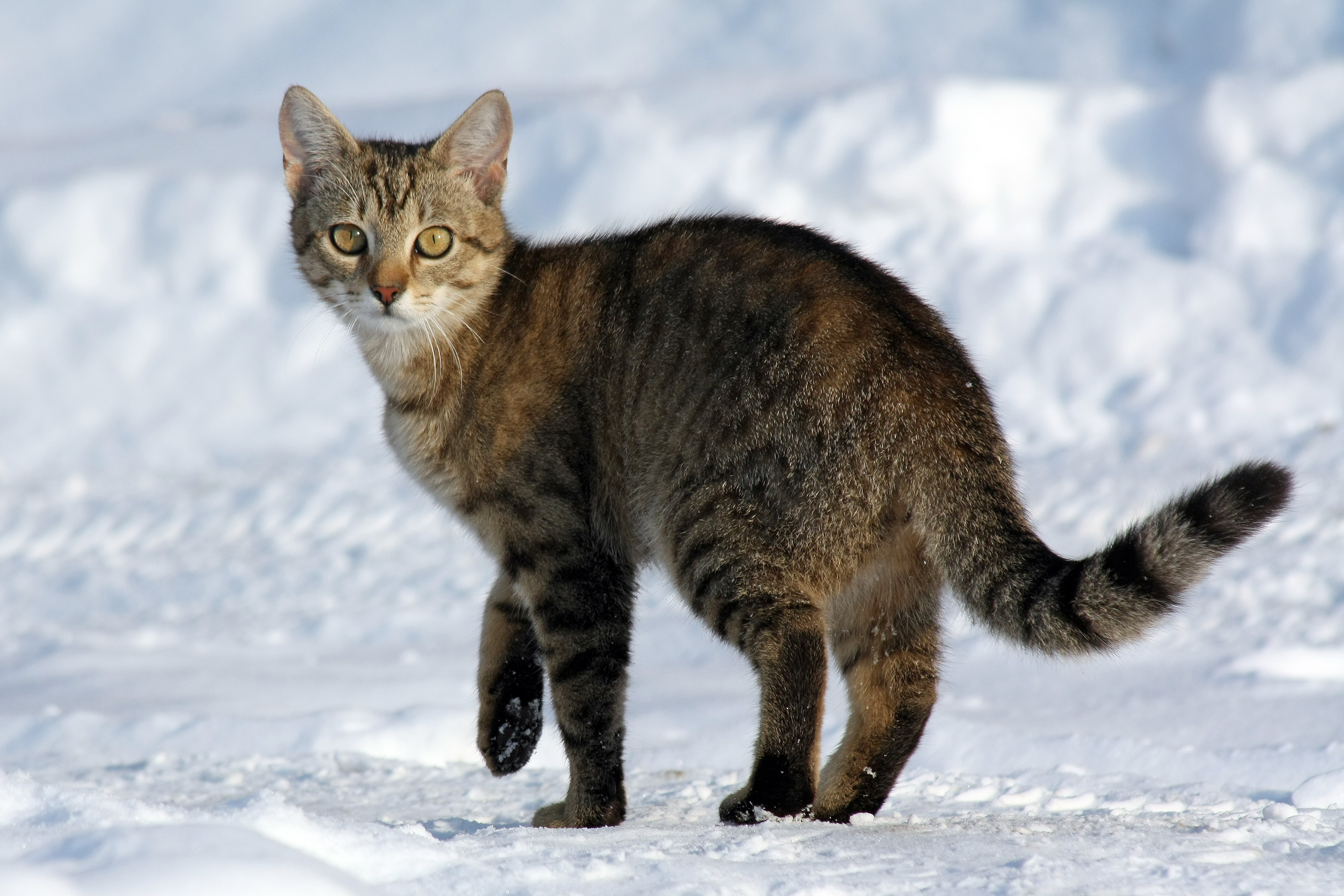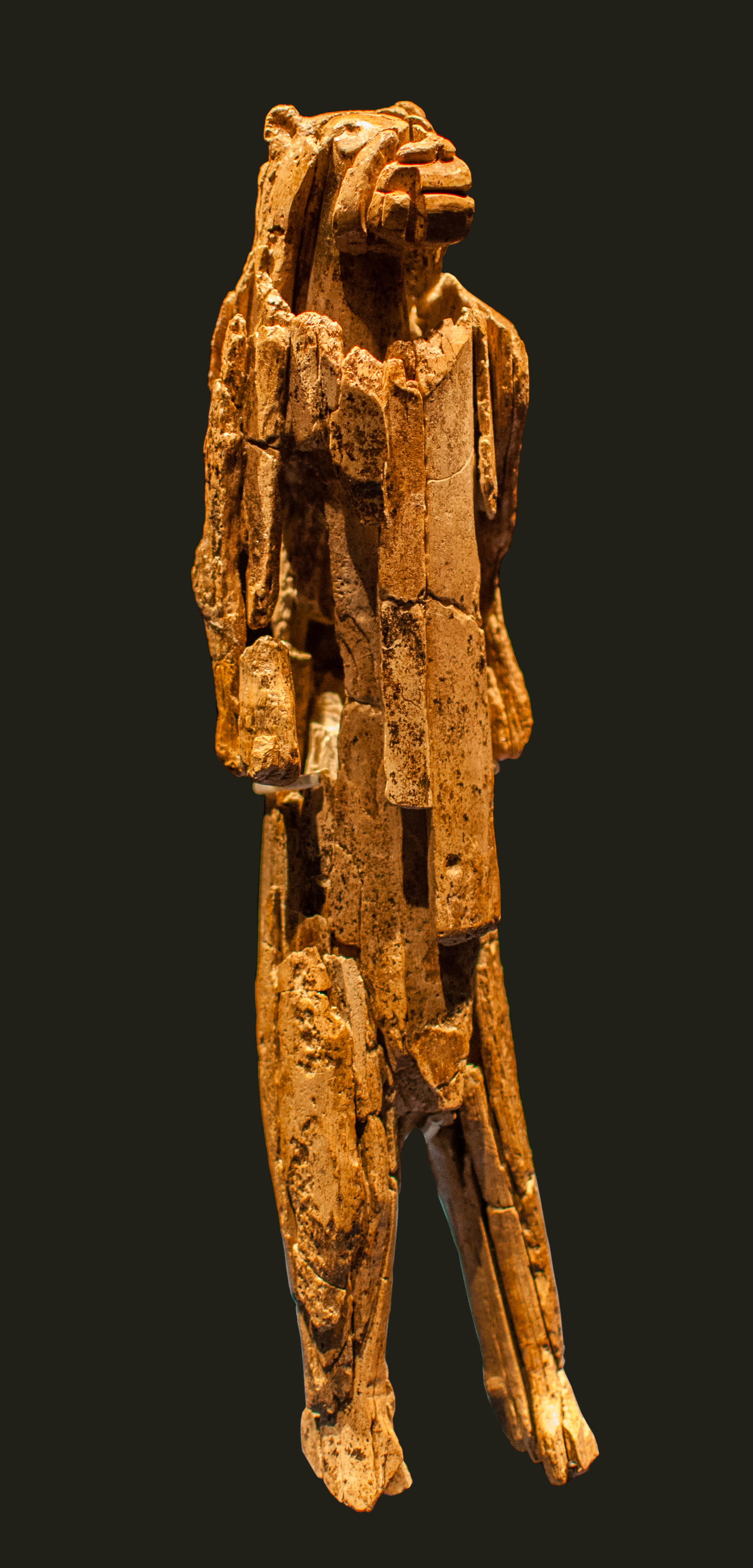|
Spotted Hyena
The spotted hyena (''Crocuta crocuta''), also known as the laughing hyena, is a hyena species, currently classed as the sole extant member of the genus ''Crocuta'', native to sub-Saharan Africa. It is listed as being of least concern by the IUCN due to its widespread range and large numbers estimated between 27,000 and 47,000 individuals. The species is, however, experiencing declines outside of protected areas due to habitat loss and poaching. Populations of ''Crocuta'', usually considered a subspecies of ''Crocuta crocuta'', known as cave hyenas, roamed across Eurasia for at least one million years until the end of the Late Pleistocene. The spotted hyena is the largest extant member of the Hyaenidae, and is further physically distinguished from other species by its vaguely bear-like build, rounded ears, less prominent mane, spotted pelt, more dual-purposed dentition, fewer nipples, and #Female genitalia, pseudo-penis. It is the only placental mammalian species where females hav ... [...More Info...] [...Related Items...] OR: [Wikipedia] [Google] [Baidu] |
Early Pleistocene
The Early Pleistocene is an unofficial epoch (geology), sub-epoch in the international geologic timescale in chronostratigraphy, representing the earliest division of the Pleistocene Epoch within the ongoing Quaternary Period. It is currently estimated to span the time between 2.580 ± 0.005 annum, Ma (million years ago) and 0.773 ± 0.005 Ma. The term Early Pleistocene applies to both the Gelasian, Gelasian Age and the Calabrian (stage), Calabrian Age. While the Gelasian and the Calabrian have officially been defined by the International Union of Geological Sciences (IUGS) to effectively constitute the Early Pleistocene, the succeeding Chibanian and Tarantian ages have yet to be ratified. These proposed ages are unofficially termed the Middle Pleistocene and Late Pleistocene respectively. The Chibanian provisionally spans time from 773 ka to 126 ka, and the Tarantian from then until the definitive end of the whole Pleistocene, c. 9700 BC in the 10th millennium BC. Notes {{Ge ... [...More Info...] [...Related Items...] OR: [Wikipedia] [Google] [Baidu] |
Carnivora
Carnivora ( ) is an order of placental mammals specialized primarily in eating flesh, whose members are formally referred to as carnivorans. The order Carnivora is the sixth largest order of mammals, comprising at least 279 species. Carnivorans are found on every major landmass and in a variety of habitats, ranging from the cold polar regions of Earth to the hyper-arid region of the Sahara Desert and the open seas. Carnivorans exhibit a wide array of body plans, varying greatly in size and shape. Carnivora are divided into two suborders, the Feliformia, containing the true felids and several animals; and the Caniformia, containing the true canids and many animals. The feliforms include the Felidae, Viverridae, hyena, and mongoose families, the majority of which live only in the Old World; cats are the only exception, occurring in the Old World and the New World, entering the Americas via the Bering land bridge. The caniforms include the Caninae, Procyonidae, bears, ... [...More Info...] [...Related Items...] OR: [Wikipedia] [Google] [Baidu] |
Upper Paleolithic
The Upper Paleolithic (or Upper Palaeolithic) is the third and last subdivision of the Paleolithic or Old Stone Age. Very broadly, it dates to between 50,000 and 12,000 years ago (the beginning of the Holocene), according to some theories coinciding with the appearance of behavioral modernity in early modern humans. It is followed by the Mesolithic. Anatomically modern humans (i.e. ''Homo sapiens'') are believed to have emerged in Africa around 300,000 years ago. It has been argued by some that their ways of life changed relatively little from that of archaic humans of the Middle Paleolithic, until about 50,000 years ago, when there was a marked increase in the diversity of Artefact (archaeology), artefacts found associated with modern human remains. This period coincides with the most common date assigned to early human migrations, expansion of modern humans from Africa throughout Asia and Eurasia, which may have contributed to the Neanderthal extinction, extinction of th ... [...More Info...] [...Related Items...] OR: [Wikipedia] [Google] [Baidu] |
Human
Humans (''Homo sapiens'') or modern humans are the most common and widespread species of primate, and the last surviving species of the genus ''Homo''. They are Hominidae, great apes characterized by their Prehistory of nakedness and clothing#Evolution of hairlessness, hairlessness, bipedality, bipedalism, and high Human intelligence, intelligence. Humans have large Human brain, brains, enabling more advanced cognitive skills that facilitate successful adaptation to varied environments, development of sophisticated tools, and formation of complex social structures and civilizations. Humans are Sociality, highly social, with individual humans tending to belong to a Level of analysis, multi-layered network of distinct social groups — from families and peer groups to corporations and State (polity), political states. As such, social interactions between humans have established a wide variety of Value theory, values, norm (sociology), social norms, languages, and traditions (co ... [...More Info...] [...Related Items...] OR: [Wikipedia] [Google] [Baidu] |
Scavenge
Scavengers are animals that consume dead organisms that have died from causes other than predation or have been killed by other predators. While scavenging generally refers to carnivores feeding on carrion, it is also a herbivorous feeding behavior. Scavengers play an important role in the ecosystem by consuming dead animal and plant material. ''Decomposers'' and detritivores complete this process, by consuming the remains left by scavengers. Scavengers aid in overcoming fluctuations of food resources in the environment. The process and rate of scavenging is affected by both biotic and abiotic factors, such as carcass size, habitat, temperature, and seasons. Etymology Scavenger is an alteration of ''scavager,'' from Middle English ''skawager'' meaning "customs collector", from ''skawage'' meaning "customs", from Old North French ''escauwage'' meaning "inspection", from ''schauwer'' meaning "to inspect", of Germanic origin; akin to Old English ''scēawian'' and German '' ... [...More Info...] [...Related Items...] OR: [Wikipedia] [Google] [Baidu] |
Predation
Predation is a biological interaction in which one organism, the predator, kills and eats another organism, its prey. It is one of a family of common List of feeding behaviours, feeding behaviours that includes parasitism and micropredation (which usually do not kill the Host (biology), host) and parasitoidism (which always does, eventually). It is distinct from Scavenger, scavenging on dead prey, though many predators also scavenge; it overlaps with Herbivore, herbivory, as Seed predation, seed predators and destructive frugivores are predators. Predation behavior varies significantly depending on the organism. Many predators, especially carnivores, have evolved distinct hunting strategy, hunting strategies. Pursuit predation involves the active search for and pursuit of prey, whilst ambush predation, ambush predators instead wait for prey to present an opportunity for capture, and often use stealth or aggressive mimicry. Other predators are opportunism, opportunistic or om ... [...More Info...] [...Related Items...] OR: [Wikipedia] [Google] [Baidu] |
Biological Opportunism
Biology is the scientific study of life and living organisms. It is a broad natural science that encompasses a wide range of fields and unifying principles that explain the structure, function, growth, origin, evolution, and distribution of life. Central to biology are five fundamental themes: the cell as the basic unit of life, genes and heredity as the basis of inheritance, evolution as the driver of biological diversity, energy transformation for sustaining life processes, and the maintenance of internal stability (homeostasis). Biology examines life across multiple levels of organization, from molecules and cells to organisms, populations, and ecosystems. Subdisciplines include molecular biology, physiology, ecology, evolutionary biology, developmental biology, and systematics, among others. Each of these fields applies a range of methods to investigate biological phenomena, including observation, experimentation, and mathematical modeling. Modern biology is grounded i ... [...More Info...] [...Related Items...] OR: [Wikipedia] [Google] [Baidu] |
Carnivore
A carnivore , or meat-eater (Latin, ''caro'', genitive ''carnis'', meaning meat or "flesh" and ''vorare'' meaning "to devour"), is an animal or plant Plants are the eukaryotes that form the Kingdom (biology), kingdom Plantae; they are predominantly Photosynthesis, photosynthetic. This means that they obtain their energy from sunlight, using chloroplasts derived from endosymbiosis with c ... whose nutrition and energy requirements are met by eating, consumption of animal tissue (biology), tissues (mainly muscle, adipose tissue, fat and other soft tissues) as food, whether through predation or scavenger, scavenging. Nomenclature Mammal order The technical term for mammals in the order (biology), order Carnivora is ''carnivoran'', and they are so-named because most member species in the group have a carnivorous diet, but the similarity of the name of the order and the name of the diet causes confusion. Many but not all carnivorans are meat eaters; a few, such as the fe ... [...More Info...] [...Related Items...] OR: [Wikipedia] [Google] [Baidu] |
Matriarchy
Matriarchy is a social system in which positions of Power (social and political), power and Social privilege, privilege are held by women. In a broader sense it can also extend to moral authority, social privilege, and control of property. While those definitions apply in general English, definitions specific to anthropology and feminism differ in some respects. Matriarchies may also be confused with matrilineality, matrilineal, matrilocal residence, matrilocal, and matrifocal family, matrifocal societies. While some may consider any non-patriarchal system to be matriarchal, most academics exclude those systems from matriarchies as strictly defined. Many societies have had matriarchal elements, but unlike the Patriarchy, patriarchal, a complete exclusion of men in authority has not been recorded in history. Definitions, connotations, and etymology According to the ''Oxford English Dictionary'' (''OED''), matriarchy is a "form of social organization in which the mother or olde ... [...More Info...] [...Related Items...] OR: [Wikipedia] [Google] [Baidu] |
Dominance (ethology)
In the zoological field of ethology, a dominance hierarchy (formerly and colloquially called a pecking order) is a type of social hierarchy that arises when members of animal social groups interact, creating a ranking system. Different types of interactions can result in dominance depending on the species, including ritualized displays of aggression or direct physical violence. In social living groups, members are likely to compete for access to limited resources and mating opportunities. Rather than fighting each time they meet, individuals of the same sex establish a relative rank, with higher-ranking individuals often gaining more access to resources and mates. Based on repetitive interactions, a social order is created that is subject to change each time a dominant animal is challenged by a subordinate one. Definitions Dominance is an individual's preferential access to resources over another based on coercive capacity based on strength, threat, and intimidation, comp ... [...More Info...] [...Related Items...] OR: [Wikipedia] [Google] [Baidu] |
Macaque
The macaques () constitute a genus (''Macaca'') of gregarious Old World monkeys of the subfamily Cercopithecinae. The 23 species of macaques inhabit ranges throughout Asia, North Africa, and Europe (in Gibraltar). Macaques are principally frugivorous (preferring fruit), although their diet also includes seeds, leaves, flowers, and tree bark. Some species such as the long-tailed macaque (''M. fascicularis''; also called the crab-eating macaque) will supplement their diets with small amounts of meat from shellfish, insects, and small mammals. On average, a southern pig-tailed macaque (''M. nemestrina'') in Malaysia eats about 70 large rats each year. All macaque social groups are arranged around dominant matriarchs. Macaques are found in a variety of habitats throughout the Asian continent and are highly adaptable. Certain species are synanthropic, having learned to live alongside humans, but they have become problematic in urban areas in Southeast Asia and are not suitabl ... [...More Info...] [...Related Items...] OR: [Wikipedia] [Google] [Baidu] |









